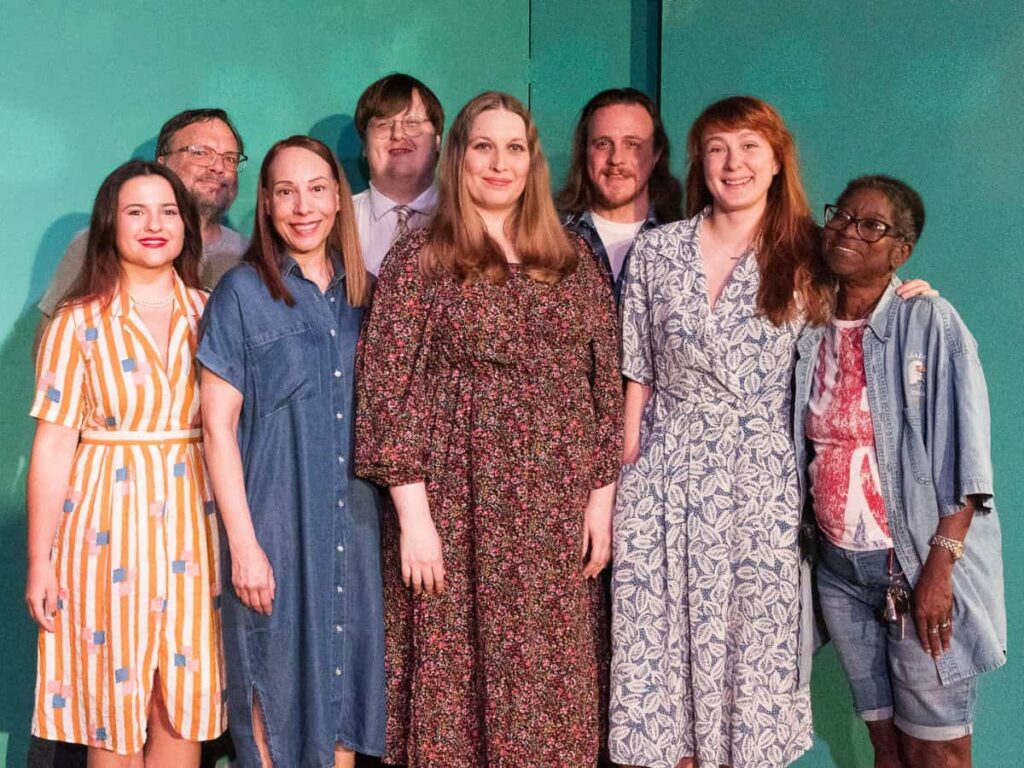Director's Blog, General, Performances
Interview with the Director of “Crimes of the Heart,” Joseph “Chepe” Lockett
After the opening of “Crimes of the Heart” by Beth Henley, we checked in with the Director, Joseph “Chepe” Lockett, to ask him about the show.
Question 1: Why did you want to direct this show?
Beth Henley’s Crimes of the Heart won the Pulitzer Prize for Drama in 1981. I encountered it almost a decade later when Neil “Sandy” Havens, my theatrical director at Rice University, would use it as a frequent example in acting classes. “Being and doing” was a common catchphrase then for the art of acting; and Crimes of the Heart is a props-heavy masterpiece of physical business and emotional swings, heavy silences and light chatter, that more than exemplifies that description.
Question 2: How would you describe your vision for this production?
My vision for this production has been to embrace the messy “Southern Gothic” perspective that’s built into the play’s wild swings between comedy and tragedy. The play comes in three acts, but they aren’t subdivided by lighting cues into neat, tidy scenes; the action flows continuously from one interaction to another. It would be easy to let the play slump into undifferentiated, emotional mush by letting scenes flow into and average out with each other, but I knew that wouldn’t serve the story and the characters that Beth Henley had created.
Question 3: How has the rehearsal process been for this show? What has been exciting? What has been challenging?
And so our rehearsal process has been to shatter the play into what are called “French scenes”, demarcated by the entrance or exit of a character, and to examine each of those sections individually. We’ve treated the scenes like individual panes of stained glass, each with its own lovely shape and color, worthy of appreciation even before being assembled into a glorious church window. The actors read through the entire play at the beginning of rehearsals, April 8 and 9; after that, we didn’t even assemble so much as an entire act until May 22, and our first run-through was a week later. That’s much later than is usual in theatrical rehearsals, but I thought it was necessary to capture and preserve the individual essence of each scene.
That’s been exciting as we were able to lavish attention and detail on each specific moment of the play, rather than letting some scenes steal time from others. Late in the process, we even had actors coming outside their rehearsal hours to see “what everyone else had been up to”. And when we assembled all those pieces together, and carefully joined up the connections, you could feel the different situations and emotions tugging at each other, making the play a restless beast rather than a monotonous recitation.
As a director, I like to engage actors as co-creators of the story. If I wanted to be in absolute control of every element of the performance, I would have gone into puppetry, not live theatre. Many of the moments you’ll see on stage were the result of choices I offered the actors: if you approach on this line, your character will tend this way; if you avoid the conversation by moving away, it will color the character differently. My job has been to ensure that we’re all building the same house, but the decor of the individual “rooms” comes just as much from the creativity and passion of the individual performers.
Question 4: What has been your favorite moment so far?
I love so many of the moments we’ve created together. Haylee Feng has taken Chick, a character who could have been merely an irritating gadfly, and made her into an epic villain. Margot Merek is as eloquent with her body language as with her voice, whether speaking to an unheard partner on the phone or enduring her character Lenny’s manifold troubles. James Sheahan offers up Doc as a wounded warrior who has to balance justified anger with loving compassion. Jana Smith’s Meg shows us a hard-edged survivor who learns to open up to both show vulnerability and comfort it in others. Mackenzie Kelso’s monologues as Babe are like operatic arias of loneliness and confusion mixed with moments of manic joy. And Dylan Small plays small-town lawyer Barnett Lloyd as an energetic crusader who can still be touched by moments of crushing melancholy.
Question 5: What should the audience be excited about seeing or experiencing at your show?
Come see our show if you’d like to have a rollercoaster ride between loneliness and community, resilience and transcendence, shared trauma and deep joy, in which characters escape the past to seize the future. Crimes of the Heart is both a sterling piece of American theatrical history and a potent fable for the individual emotions and common aspirations of our era.
Visit here to learn more about “Crimes of the Heart” and to get your tickets today.

